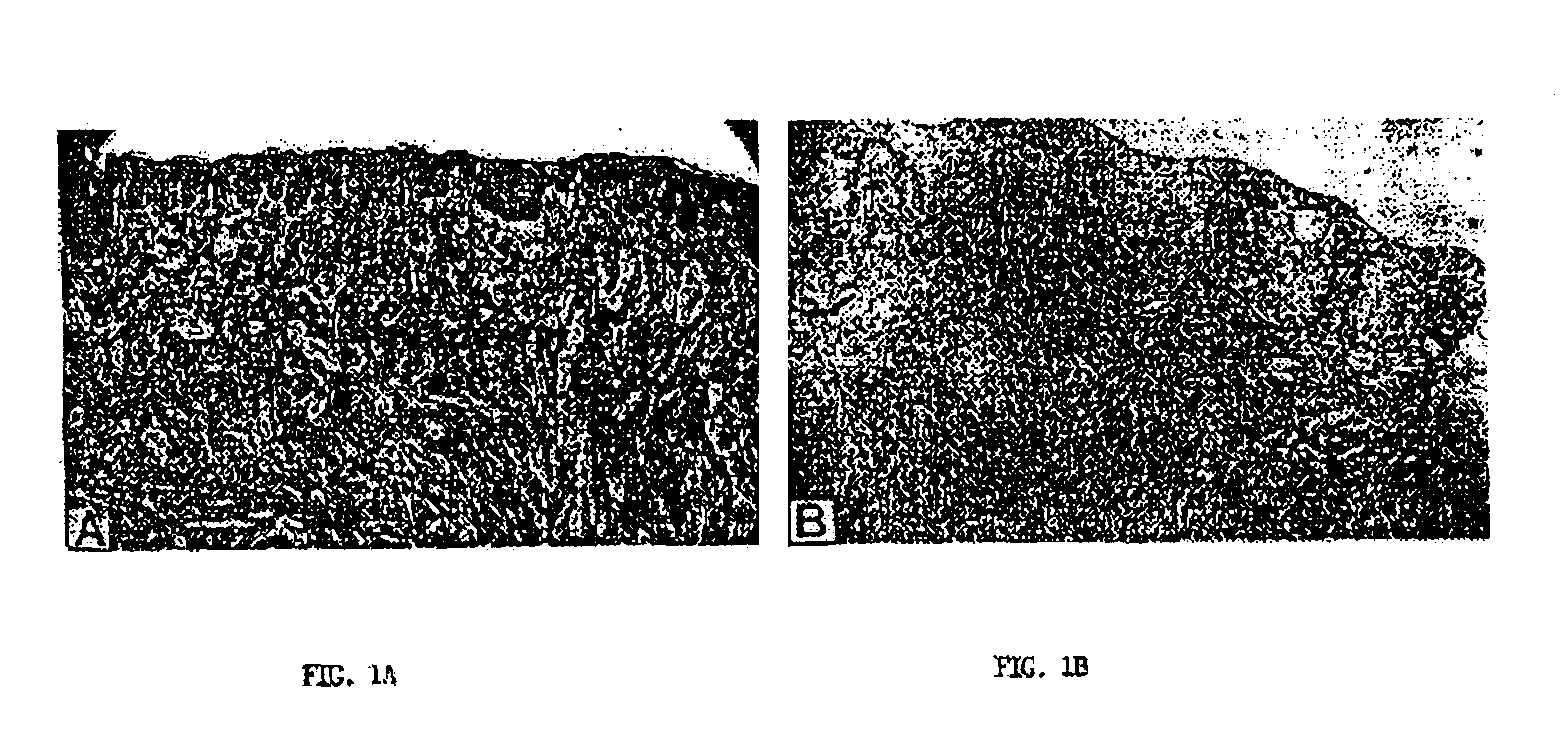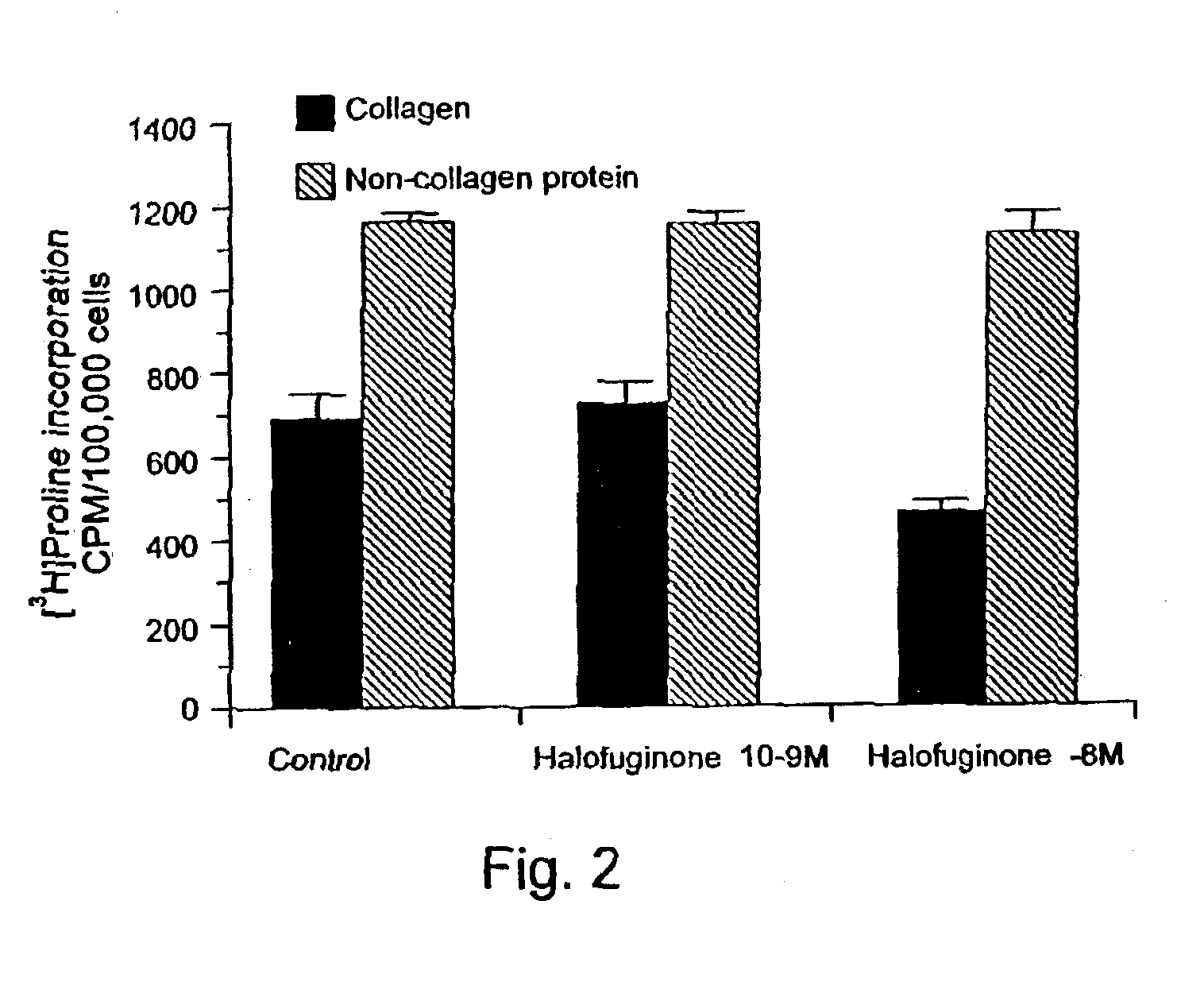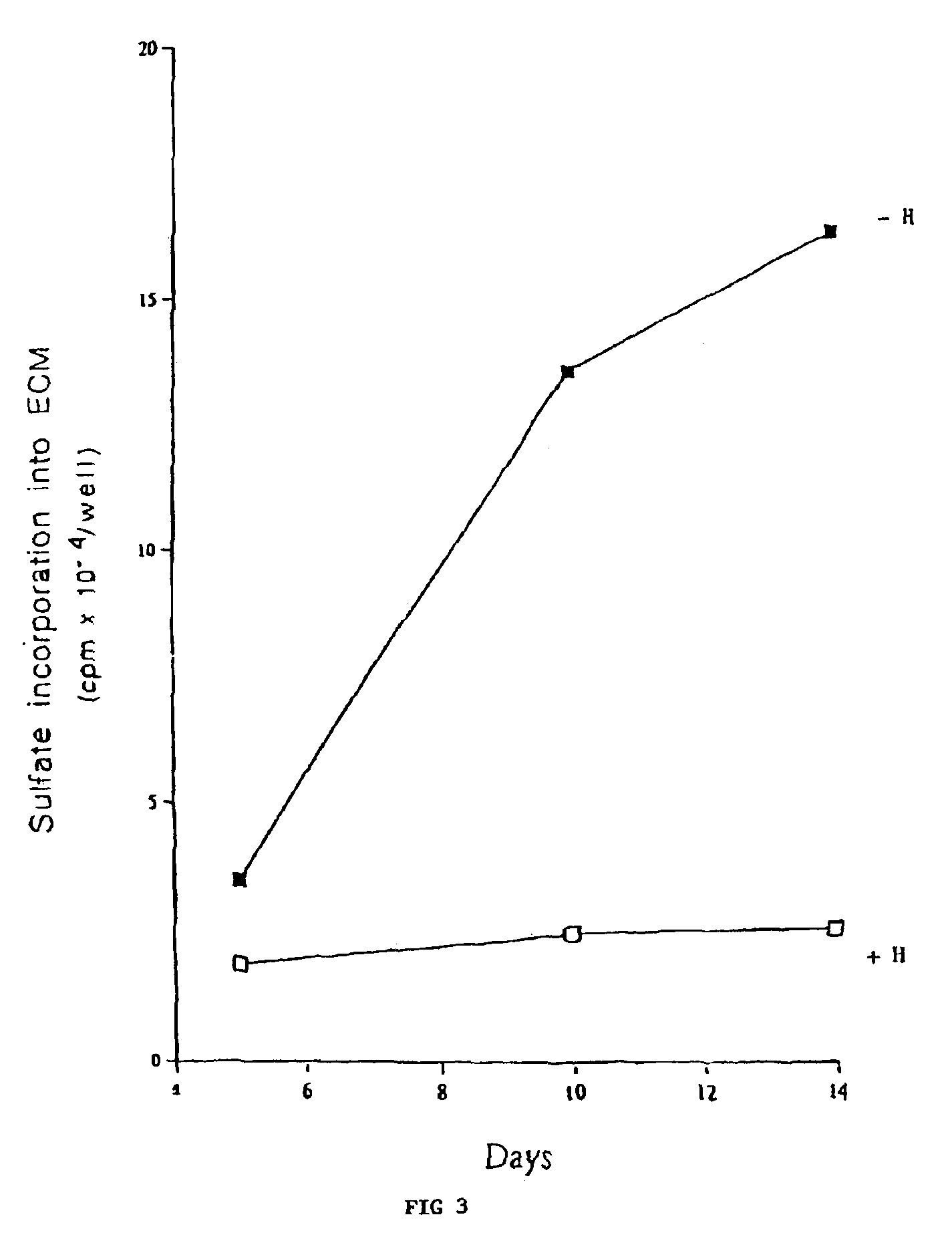Treatment of skin disorders
a technology for skin disorders and compositions, applied in the direction of drug compositions, dermatological disorders, biocide, etc., can solve the problems of significant cosmetic problems, source of discomfort, keloids and hypertrophic scars that can become so large that they are crippling
- Summary
- Abstract
- Description
- Claims
- Application Information
AI Technical Summary
Benefits of technology
Problems solved by technology
Method used
Image
Examples
example 1
Collagen Synthesis in Keloid-Derived Tissue
[0060]The presence of large amounts of collagen protein, as well as of the expression of the collagen α1(I) gene, were demonstrated in keloid-derived tissue. The results are shown in FIGS. 1A and 1B. The experiment was conducted as follows.
[0061]A keloid, which had arisen in response to the piercing of the ear for insertion of an earring, was removed from the ear lobe of a 21 year-old male. The keloid tissue was sectioned so that histological studies could be performed. Briefly, the tissue samples were collected into phosphate-buffered saline (PBS) and fixed overnight in 4% paraformaldehyde in PBS at 4° C. Serial 5 um sections were prepared after the samples had been dehydrated in graded ethanol solutions, cleared in chloroform and embedded in Paraplast. Differential staining of collagenous and non-collagenous proteins was performed with 0.1% Sirius red and 0.1% fast green as a counter-stain in picric acid. This procedure stains collagen re...
example 2
Inhibitory Effect of Halofuginone on Collagen Synthesis in Keloid-Derived Tissue
[0064]Halofuginone was shown to specifically inhibit collagen synthesis in keloid-derived tissue. The results are shown in FIG. 2. The experiment was conducted as follows.
[0065]The keloid was removed as described in Example 1 above. The keloid-derived cells were incubated with and without Halofuginone for 24 hours in 0.5 ml glutamine-free DMEM containing 5% FCS (Fetal Calf Serum), ascorbic acid (50 μg / ml), B-aminopropionitrile (50 μg / ml) and 2 μCi of [3H]proline. At the end of incubation, the medium was decanted and the cells were incubated with or without collagenase for 18 hours, followed by precipitation of proteins by the addition of TCA (trichloroacetic acid). The amount of radiolabelled collagen was estimated as the difference between total labelled-proline containing proteins and those left after collagenase digestion [Granot, I. et al., Mol. Cell Endocrinol., Vol. 80, p. 1-9, 1991].
[0066]The rati...
example 3
Halofuginone Inhibition of Sulfate Incorporation into ECM of Cultured Endothelial Cells
[0067]As noted above, skin cell hyperproliferation is enabled by the deposition of ECM components. The following examples illustrate the ability of Halofuginone to inhibit such deposition of ECM components, further supporting the use of Halofuginone as a treatment for psoriasis. These examples illustrate the unexpected finding that Halofuginone completely abolishes deposition of all ECM components, and not just collagen, thereby preventing cell proliferation which is enabled by the formation of ECM. Cultures of bovine corneal endothelial cells were established from steer eyes and maintained as previously described [D. Gospodarowicz, et al., Exp. Eye Res., No. 25, pp. 75-99 (1977)]. Cells were cultured at 37° C. in 10% CO2 humidified incubators and the experiments were performed with early (3-8) cell passages.
[0068]For preparation of sulfate-labelled ECM (extra-cellular matrix), corneal endothelial...
PUM
| Property | Measurement | Unit |
|---|---|---|
| pH | aaaaa | aaaaa |
| concentration | aaaaa | aaaaa |
| density | aaaaa | aaaaa |
Abstract
Description
Claims
Application Information
 Login to View More
Login to View More - R&D
- Intellectual Property
- Life Sciences
- Materials
- Tech Scout
- Unparalleled Data Quality
- Higher Quality Content
- 60% Fewer Hallucinations
Browse by: Latest US Patents, China's latest patents, Technical Efficacy Thesaurus, Application Domain, Technology Topic, Popular Technical Reports.
© 2025 PatSnap. All rights reserved.Legal|Privacy policy|Modern Slavery Act Transparency Statement|Sitemap|About US| Contact US: help@patsnap.com



